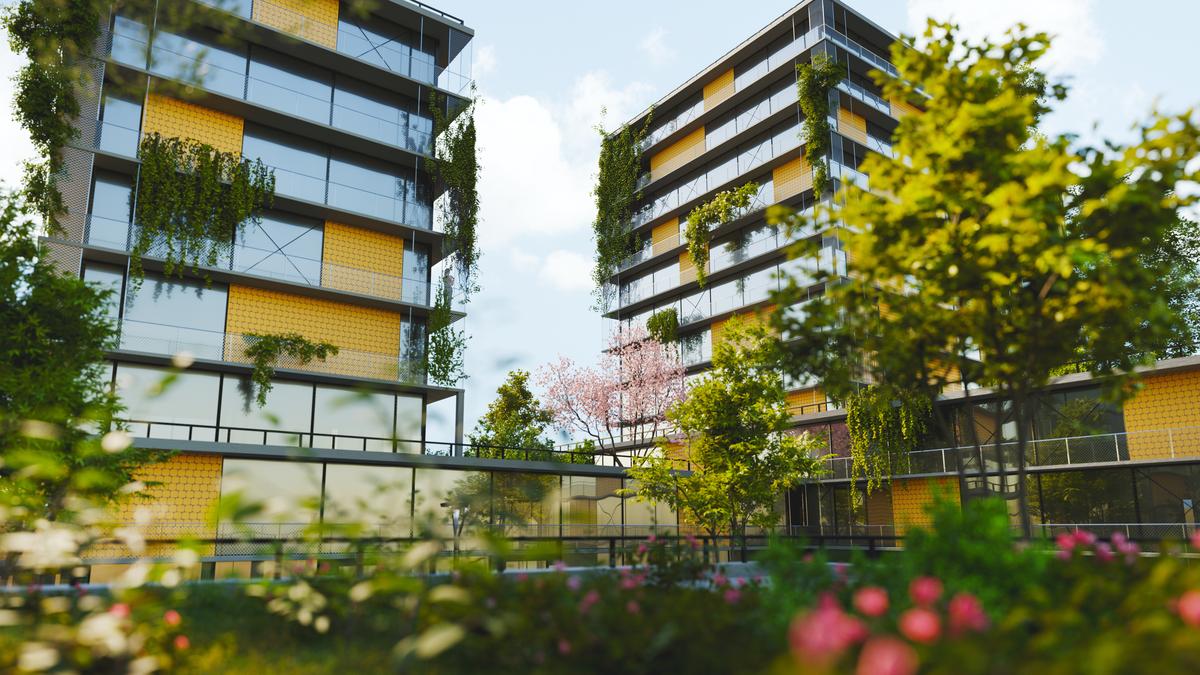
Biophilic design: A 2024 hit
The Hindu
Biophilic design: A leading trend this year by property developers, it has resulted in herb gardens and biodiversity corridors shaping luxury living in the country.
The allure of luxury living today extends beyond opulence and convenience. Discerning homeowners now demand spaces that foster well-being, sustainability, and a deeper connection to nature. In India, biophilic design is taking on unique dimensions, drawing from the country’s rich cultural heritage, biodiversity, and climatic diversity. From incorporating Ayurvedic principles in spatial layouts to reviving indigenous materials in modern architecture, the biophilic movement is creating living spaces that are as functional as they are inspirational. Developers are embracing biophilic principles to create vertical forests and green facades, providing residents with the benefits of nature while maximising urban land use. For example, in Mumbai, Raheja Universal introduced a high-rise with lush green terraces and vertical gardens that extend up the building, offering each unit a connection to nature. Similarly, DLF’s Camellias in Gurugram boasts expansive green spaces interspersed with high-rise luxury apartments.
Another standout example is Eros Sampoornam, a project designed with a unique focus on open spaces and natural integration. While primarily a mid-rise development, its extensive landscaped gardens, walking trails, and water features embody the principles of biophilic design, making it a benchmark for sustainable luxury living in Greater Noida West. This project showcases how biophilic design can enhance the quality of life in both vertical and low-rise communities.
This paradigm shift is not just about aesthetics; it’s a response to pressing global challenges, including urban stress, environmental degradation, and the growing importance of mental health.
India’s ancient wellness science, Ayurveda, is finding a modern expression in biophilic luxury homes. While globally, biophilic design often emphasises greenery and natural light, the Indian approach delves deeper, aligning spaces with individual well-being.
Luxury developments are now tailoring indoor environments to support specific doshas — vata, pitta, and kapha — to enhance physical and emotional balance. For instance, homes designed for pitta individuals incorporate cooling elements like indoor water features and light hues, while vata-friendly designs focus on warmth and grounding textures, such as terracotta and bamboo.
Another emerging trend is therapeutic landscapes, where residential gardens include Ayurvedic herbs like tulsi, neem, and brahmi. These not only enhance the aesthetic appeal but also provide residents with access to plants that promote healing and immunity.
In South India, developers are integrating wellness zones inspired by Ayurvedic retreats. These include yoga decks, herbal spas, and meditation gardens that align with the principles of holistic health. By incorporating Ayurvedic elements, biophilic design transcends its aesthetic value, offering residents a personalised sanctuary for rejuvenation.

The Karnataka government has drafted a comprehensive master plan for the integrated development of Kukke Subrahmanya temple, the State’s highest revenue-generating temple managed by the Hindu Religious Institutions and Charitable Endowments Department. The redevelopment initiative is estimated to cost around ₹254 crore and aims to enhance infrastructure and facilities for devotees.












